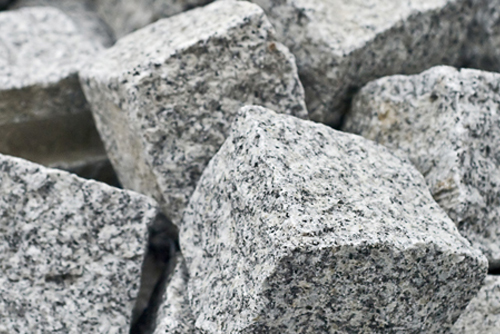The rocks they are the association of one or more minerals. They are produced by geological processes. Rocks are constantly modified by the action of different geological agents, such as water or wind, and by living beings. For instance: granite, limestone, marble.
Rocks are classified according to their properties:
Igneous rocks
The igneous rocks they are the result of the solidification of magma. Magma is a molten mineral mass, that is, it has a certain fluidity. Magma contains both minerals and volatile and dissolved gases.
Igneous rocks can be intrusive or extrusive:
- Intrusive rocks. Also called plutonics, they are the most abundant and form the deepest parts of the earth’s crust.
- Extrusive rocks. Also called volcanic, they are formed as a result of the cooling of lava on the surface of the earth.
Examples of igneous rocks

- Granite (plutonic). Light gray or red in color. Composed of quartz, potassium feldspar and mica.
- Porphyry (plutonic). Dark red in color. Composed of feldspar and quartz.
- Gabbro (plutonic). Coarse in texture. It is composed of calcium plagioclase, pyroxene, olivine, hornblende, and hypersthene.
- Syenite (plutonic). It differs from granite because it does not contain quartz. Contains feldspar, oligoclases, albite, and other minerals.
- Greenstone (plutonic). Of intermediate composition: two thirds of plagioclase and one third of dark minerals.
- Peridotite (plutonic). Dark in color and high density. Composed almost entirely of pyroxene.
- Tonalite (plutonic). Composed of quartz, plagioclase, hornblende, and biotite.
- Basalt (volcanic). Dark in color, composed of magnesium and iron silicates, in addition to a low silica content.
- Andesite (volcanic). Dark or medium gray in color. Composed of plagioclase and ferromagnesic minerals.
- Rhyolite (volcanic). Of brown, gray or reddish colors. Formed by quartz and potassium feldspar.
- Dacite (volcanic). High in iron content, it is composed of plagioclase feldspar.
- Trachyte (volcanic). Composed of potassium feldspar and plagioclase, biotite, pyroxene, and hornblende.
Sedimentary rocks
The sedimentary rocks They are formed from the alteration and destruction of other rocks that previously existed. In this way, residual deposits are formed that can remain in the same place where they originate or that are transported by water, wind, ice or ocean currents.
Sedimentary rocks are formed by diagenesis (compaction and cementing) of sediments. The different sediments form strata, that is to say layers formed by deposit.
Examples of sedimentary rocks
- Gap. Detrital sedimentary rock, composed of angular rock fragments larger than 2 millimeters. These fragments are joined by a natural cement.
- Sandstone. Detrital sedimentary rock, of different colors, containing sand-sized clasts.
- Shale. Detrital sedimentary rock. Made up of clastic debris, in particles the size of clay and silt.
- Loam. Composed of calcite and clays. It is usually whitish in color.
- Limestone. Composed mainly of calcium carbonate. It can be white, black or brown.
Metamorphic rocks
The Metamorphic rocks are those that are produced by the evolution of a previous rock that was subjected to an energetically very different environment from its formation (for example, much colder or hotter, or by a significant pressure change).
The metamorphism it can be progressive or regressive. Progressive metamorphism occurs when the rock is subjected to a higher temperature or higher pressure, but without it melting.
Regressive metamorphism occurs when a rock that evolved at great depth (where there is greater pressure and heat) and as it approaches the surface becomes unstable and evolves.
Examples of metamorphic rocks
- Marble. Compact metamorphic rock that evolved from limestone rocks subjected to high temperature and pressure. Its basic component is calcium carbonate.
- Gneiss. Composed of quartz, feldspar and mica. Its composition is the same as granite but it forms alternating layers of light and dark minerals.
- Quartzite. Hard metamorphic rattan with high quartz content.
- Amphibolite. The oldest rocks found.
- Granulites. Formed by a high temperature process. Whitish in color, with garnet inlays. They are found on the ocean ridges.
